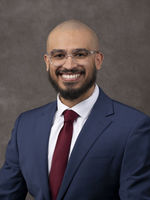
*We would like to emphasize that the Department of Cardiopulmonary Sciences is not closing permanently.
While we are not accepting new applications at this time, our dedication to excellence in education, research, and patient care remains as strong as ever. We appreciate your understanding and continued support. Please check back for future updates or contact our office for more information.
PROGRAM OVERVIEW:
The expansion of polysomnography (sleep studies) in the health-care industry has created a marked increase in demand for polysomnography technicians. Many polysomnography clinics are inundated with referrals that may be deferred for months at a time due to inadequate staffing, resulting in delay of sleep disorder diagnoses and appropriate treatments.
The certificate in polysomnography is designed for current clinical practitioners and students who are interested in specializing in sleep disorder studies. Both didactic theory and clinical application offered in the program will provide an avenue to gain knowledge, skills, and experience in the expanding discipline of polysomnography. Topics include sleep terminology, sleep structure and disorders, complete patient set-up and monitoring, data acquisition and scoring, and pharmacological and noninvasive interventions.
The program is offered on the Loma Linda University campus and will include: laboratory/clinical rotations, online and classroom discussions, and a case study presentation. Graduates of this program are eligible to sit for the sleep disorder specialist (SDS) examination by the National Board of Respiratory Care (NBRC) and/or the RPSGT examination by the Board of Registered Polysomnography Technologists (BRPT) after completion of the required clinical hours/and requirement for each board examination. * Please see professional examination section
SLEEP TECHNOLOGY APPROVED RESOURCE (STAR)

The Polysomnography Certificate program is designated as a STAR provider under the Board of Polysomnographic Technologists (BRPT). Graduates are eligible to use this Focused Training for the RPSGT exam (Pathway 4) and the CPSGT exam (Pathway 3). Please visit the http://http://www.brpt.org// website for more details.
CLINICAL SITES
Our clinical sites are American Academy of Sleep Medicine (AASM) accredited. Our goal is to have you learn from expertise who practice in an accredit facility that promote quality work.
PROGRAM OBJECTIVES
- Identify basic sleep terminology, sleep structure, and sleep disorders.
- Comprehend the effect of sleep-related breathing disorders on patients’ physiology.
- Perform and translate the International 10-20 system data acquisition (or equivalent) as it relates to sleep disorders testing.
- Recognize the technology behind the monitoring devices utilized in sleep disorders testing and identify the locations used for patient monitoring.
- Recognize the components of a computerized sleep acquisition system and describe the adjustments necessary to produce a quality/valid study.
- Recognize the components of a sleep report and demonstrate proper application of continuous positive airway pressure (CPAP), bilevel ventilation, and oxygen therapy to patients with sleep-related breathing disorders.
- Demonstrate the process of a patient set-up, sleep stage, and event scoring.
- Identify cardiac dysrhythmias and physiologic events and their clinical significance during the sleep evaluation.
- Independently perform the patient set-up for a sleep study and begin the data acquisition process, data interpretation, and troubleshooting.
- Demonstrate professional behavior towards patients and staff.
- Illustrate professional behavior towards patients with home CPAP for sleep by educating them about its use and effect relevant to their sleep disorder.
Important Announcement:
All Cardiopulmonary Sciences programs are currently closed to admissions.
Program Director

